HERITAGE
Testing Police Specials in 1958
By Drew Hardin
Photography By Ray Brock, Petersen Publishing Company Archive
HERITAGE
By Drew Hardin
Photography By Ray Brock, Petersen Publishing Company Archive
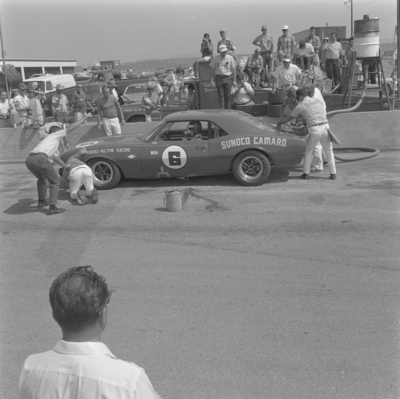 Mark Donohue’s Sunoco-blue Penske-Hilton Camaro dominated the ’68 Trans-Am season, winning 10 of the series’ 13 races (including eight in a row). Donohue had such a big points lead over the teams backed by Ford and American Motors going into the Mission Bell 250 that Motor Trend’s Eric Dahlquist wondered in a December 1968 article, “The Race for Second,” if the Penske crew would even show up at Riverside Raceway.
Mark Donohue’s Sunoco-blue Penske-Hilton Camaro dominated the ’68 Trans-Am season, winning 10 of the series’ 13 races (including eight in a row). Donohue had such a big points lead over the teams backed by Ford and American Motors going into the Mission Bell 250 that Motor Trend’s Eric Dahlquist wondered in a December 1968 article, “The Race for Second,” if the Penske crew would even show up at Riverside Raceway.
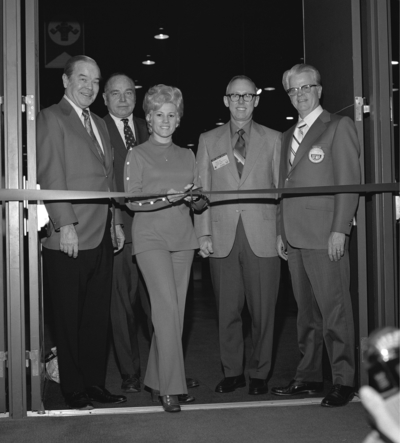 The VIPs chosen for the ceremonial ribbon cutting to open the 1971 SEMA Show represented the past, present and future of automotive performance. Doing the honors with her “shifting hand,” as Hot Rod Industry News (HRIN) described it, was drag racer Shirley Shahan. She was joined by (from left) Willie Garner, Don Jensen, Doug Toms and Roy Richter.
The VIPs chosen for the ceremonial ribbon cutting to open the 1971 SEMA Show represented the past, present and future of automotive performance. Doing the honors with her “shifting hand,” as Hot Rod Industry News (HRIN) described it, was drag racer Shirley Shahan. She was joined by (from left) Willie Garner, Don Jensen, Doug Toms and Roy Richter.
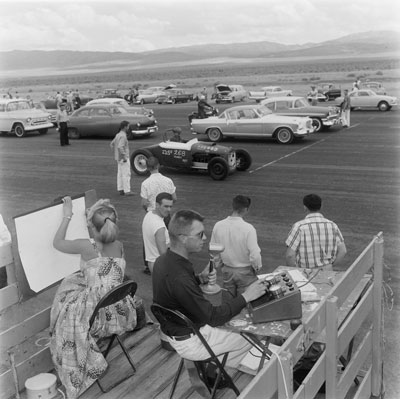 In late September 1957, Hot Rod’s Eric Rickman traveled north from Los Angeles to the Douglas-Tahoe Airport in Minden, Nevada, (near Reno) for the final meet of the Nevada Timing Association’s drag racing season.
In late September 1957, Hot Rod’s Eric Rickman traveled north from Los Angeles to the Douglas-Tahoe Airport in Minden, Nevada, (near Reno) for the final meet of the Nevada Timing Association’s drag racing season.
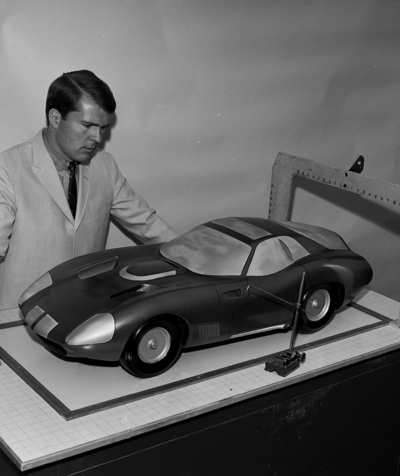 The film Ford v Ferrari gave us a taste of the turbulent relationship Carroll Shelby had with the Ford Motor Company. Despite nearly constant friction between the maverick in Los Angeles and management in Dearborn, there were great successes, to be sure. But there were also some missed opportunities. Such was the case with the Type 65, also known as the Daytona Super Coupe.
The film Ford v Ferrari gave us a taste of the turbulent relationship Carroll Shelby had with the Ford Motor Company. Despite nearly constant friction between the maverick in Los Angeles and management in Dearborn, there were great successes, to be sure. But there were also some missed opportunities. Such was the case with the Type 65, also known as the Daytona Super Coupe.
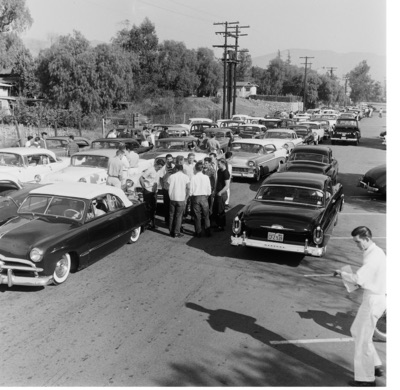 The ’49 Ford convertible ready to leave is typical of the mildly modified cars taking part—in this case, with a lowered suspension, shaved door handles and other body trim, and spinner hubcaps. Most of the cars were just a few years old. We spotted just two ’32 Ford coupes among the ’50s Chevys, Buicks, Fords, Oldsmobiles and even a pickup or two at the run.
The ’49 Ford convertible ready to leave is typical of the mildly modified cars taking part—in this case, with a lowered suspension, shaved door handles and other body trim, and spinner hubcaps. Most of the cars were just a few years old. We spotted just two ’32 Ford coupes among the ’50s Chevys, Buicks, Fords, Oldsmobiles and even a pickup or two at the run.
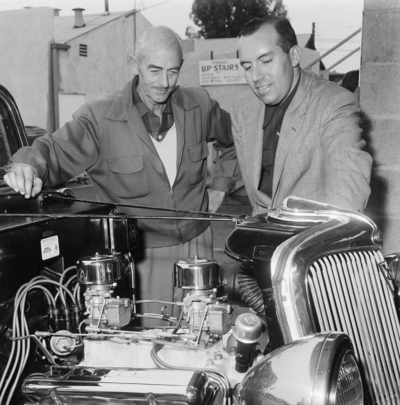 The gentleman on the left—Winston Roche of North Hollywood, California—bought his ’34 Ford sedan as a new car. His job as a civil engineer took him all over the country, and the Ford’s trusty Flathead V8 carried him on his rounds for 20-some years, covering more than 300,000 miles in the process. By late 1956, though, the engine was just worn out, having been through several rebuilds.
The gentleman on the left—Winston Roche of North Hollywood, California—bought his ’34 Ford sedan as a new car. His job as a civil engineer took him all over the country, and the Ford’s trusty Flathead V8 carried him on his rounds for 20-some years, covering more than 300,000 miles in the process. By late 1956, though, the engine was just worn out, having been through several rebuilds.
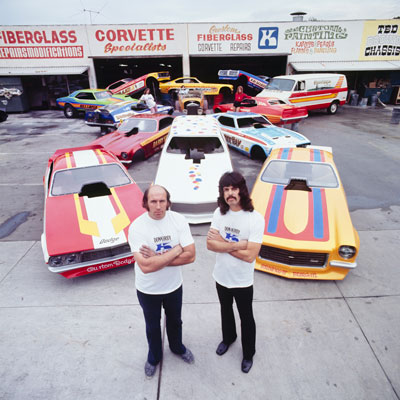 Funny Cars were about the hottest thing on wheels in the ’70s, and many of the most storied examples of the breed passed through the Funny Car supermarket of Don Kirby. That’s Kirby on the left, posing with his “right-hand man and trusty companion” Nat Quick, as Hot Rod Editor Terry Cook described him in a February 1973 profile.
Funny Cars were about the hottest thing on wheels in the ’70s, and many of the most storied examples of the breed passed through the Funny Car supermarket of Don Kirby. That’s Kirby on the left, posing with his “right-hand man and trusty companion” Nat Quick, as Hot Rod Editor Terry Cook described him in a February 1973 profile.
 So began Car Craft’s February 1967 coverage of “Mickey’s Meet,” what the magazine said was “the last big race of the season” and “the final chance for budding dragster hopefuls and proven pros to strike it rich in ’66. Top money for the winner was more than $5,000.”
So began Car Craft’s February 1967 coverage of “Mickey’s Meet,” what the magazine said was “the last big race of the season” and “the final chance for budding dragster hopefuls and proven pros to strike it rich in ’66. Top money for the winner was more than $5,000.”